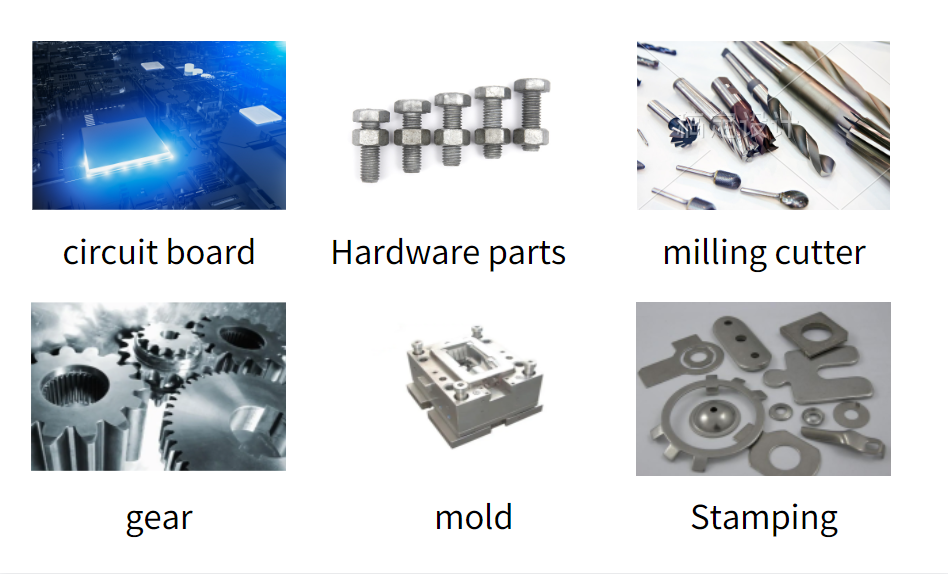Grating ruler, also known as grating ruler displacement sensor (grating ruler sensor), is an accurate measurement feedback device that utilizes the optical principles of fiber optic sensors in operation. The grating ruler is often used in the closed-loop control servo control system of CNC lathes, which can be used as a test for parallel line offset or angular velocity. The precise measurement output data signal is a single pulse of data, which has the characteristics of large inspection scope, high inspection accuracy, and fast response time. For example, in CNC lathes, it is often used to inspect the coordinates of CNC blades and product workpieces to observe and track feed deviations, in order to compensate for the fitness movement deviation of CNC blades. The installation of the grating ruler line displacement sensor is relatively flexible and can be installed in different positions on CNC lathes. Generally, the main ruler is installed on the operating platform (double rocker) of the CNC lathe, which moves with the feed of the CNC lathe. The reading head is fixed on the bed and should be installed directly below the main ruler as much as possible. The selection of its installation method must pay attention to the scattering direction of cutting, cutting oil, and hydraulic oil. If the installation method with the reading head facing upwards is necessary due to the limited installation location, it is necessary to improve the auxiliary sealing equipment. In addition, in general, the reading head should be installed on the stationary components of the relative CNC lathe as much as possible. In this case, the output transmission line is easy to fix without moving, while the ruler body should be installed on the components of the relative CNC lathe for fitness movement (such as a double rocker).
1. When installing the X-ray real-time imaging flaw detection machine on the reference plane of the grating ruler line displacement sensor, the sensor cannot be immediately installed on the body of the CNC lathe that is not smooth or uneven, let alone on the body of the CNC lathe that is internally painted. The main ruler and reading head of the fiber optic sensor are respectively installed on two components of the relative speed of the CNC lathe. Use a micrometer to check the flatness of the installation surface of the main ruler on the machine tool workbench and the orientation of the slide track for fitness activities. The dial gauge should be fixed on the bed and the operating table should be moved to achieve a flatness of within 0mm/100mm. If this regulation cannot be achieved, a design plan is required to produce and process a grating ruler base.
The foundation regulations guarantee that:
(1) A base with the same length as the grating ruler should be added (preferably 50 millimeters longer than the grating ruler).
(2) The base is produced and processed according to the milling and grinding process, ensuring that the flatness of its plan is within 0.1mm-100mm.
In addition, it is necessary to produce and process a reading head base that is contour with the base of the ruler body. The total deviation between the base of the reading head and the base of the ruler body should not exceed ± 0.3mm. During installation, adjust the position of the reading head to ensure that the flatness between the reading head and the grating ruler body is around 0mm, and the spacing between the reading head and the grating ruler body is around 1-1.5mm.
2. Installation of grating ruler line displacement sensor main ruler
Use M4 screws to attach the main ruler of the fiber optic sensor to the installation surface of the CNC lathe on the operating platform, but do not tighten it. Fix the dial indicator on the bed and move the operating platform (the main ruler and the operating platform are moved separately). Use a micrometer to accurately measure the flatness of the main ruler plan and the fitness direction of the machine tool guide rail. Adjust the M4 screw position of the main ruler to ensure that the flatness of the main ruler is within 0.1mm/100mm. Tighten the M2 screw completely. When installing the main ruler of the fiber optic sensor, the following three points should be noted:
(1) When installing the main ruler, if installing fiber optic sensors exceeding 1.5C, it is not allowed to install only the two heads like a highway bridge, and support points should be provided in all the main ruler bodies.
(2) After installation with a base, it is best to use a snap to clamp the center (or several aspects) of the ruler body tightly.
(3) When the buckle cannot be installed, it is best to use structural adhesive to stick the grating ruler body, so that the base ruler and the main ruler cannot be fixed properly.




